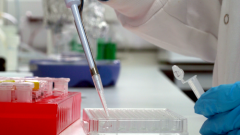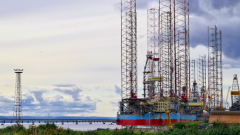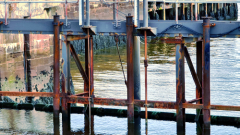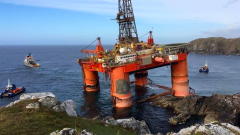Hazardous substances and their effects
The marine environment acts as a sink for many hazardous substances, including persistent organic pollutants (POPs) and heavy metals. Many of these compounds are toxic, persistent, bioaccumulative and can be prone to long range transport. Their sources and pathways into the marine environment are diverse with most hazardous substances being produced by anthropogenic activities. Some are, or have been, produced intentionally (such as polychlorinated biphenyls (PCBs) and polybrominated diphenyl ethers (PBDEs)) whilst others are by-products of industrial processes (such as polycyclic aromatic hydrocarbons (PAHs)). Direct or indirect release to rivers, from industrial discharges and from sewage works discharges, are a major source of a range of hazardous substances in the marine environment. Historically the biggest sources of hazardous substances to the Scottish environment were from heavy industry (steelworks, mining and gasworks), however increased regulation and closure of some of these industries has reduced contaminant inputs from these sources. Run-off from urban areas and atmospheric deposition continue to be diffuse sources of hazardous substances to the marine environment. Due to the persistent nature of many hazardous substances, high concentrations can still be found in the sediments of industrialised and urbanised estuaries as a result of historical inputs.
Monitoring of hazardous substances and their biological effects in the Scottish marine environment is required to assess what measures and action are required in order to enable the Scottish vision of clean and safe seas to be delivered. In addition, such monitoring is essential in order to ensure that Scotland fulfils its part in international obligations to OSPAR and under EU legislation. Hazardous substances highlighted to be of particular concern and routinely monitored include heavy metals (cadmium, mercury and lead), PCBs, PAHs and PBDEs.
The assessment also considers oil and chemical discharges and releases (which may come about as a result of an accident) as well as the concentration of radionuclides in the sea. The Case study: Maritime casualties investigated by the Marine Accident Investigation Branch explores the occurrence of marine accidents or incidents in Scottish waters.







